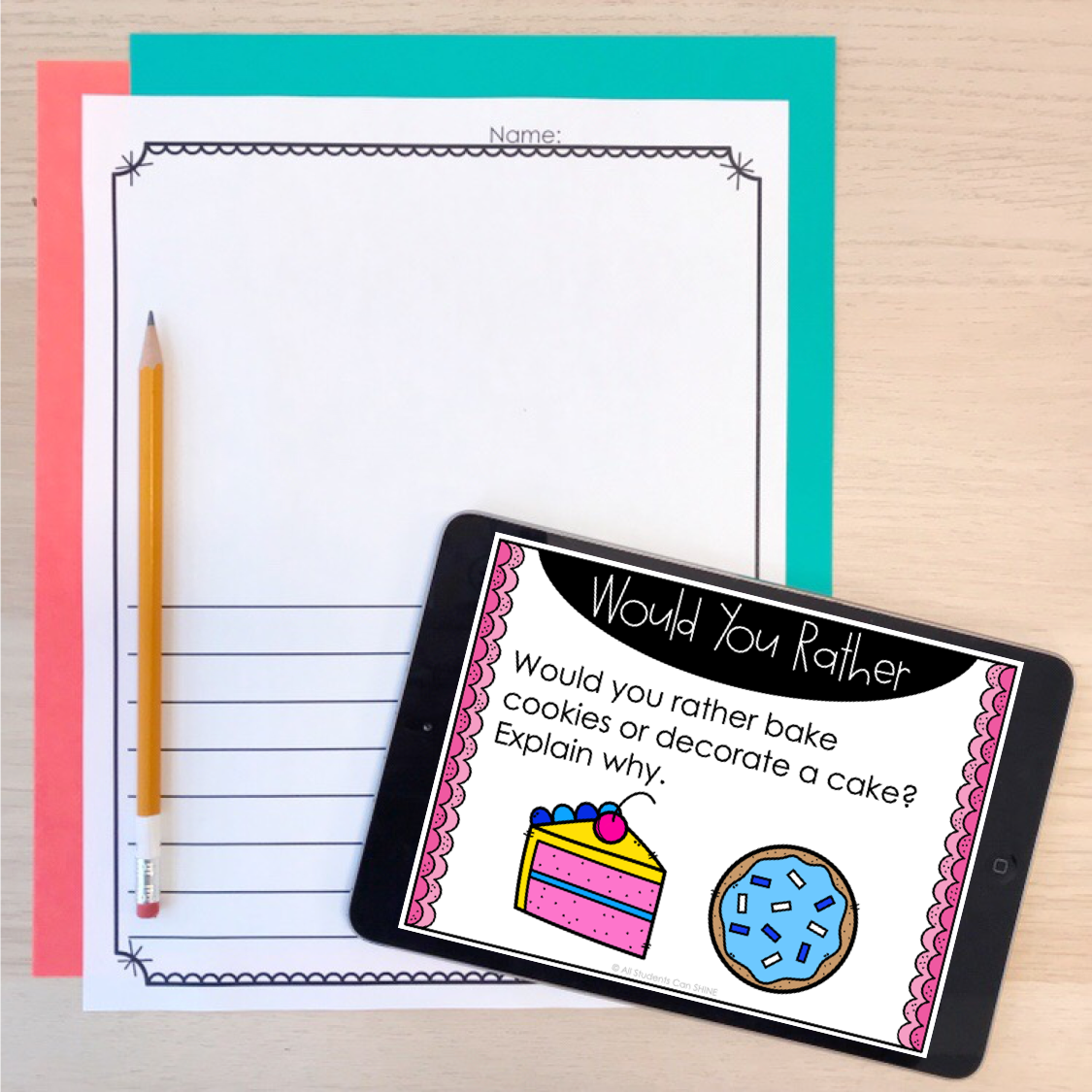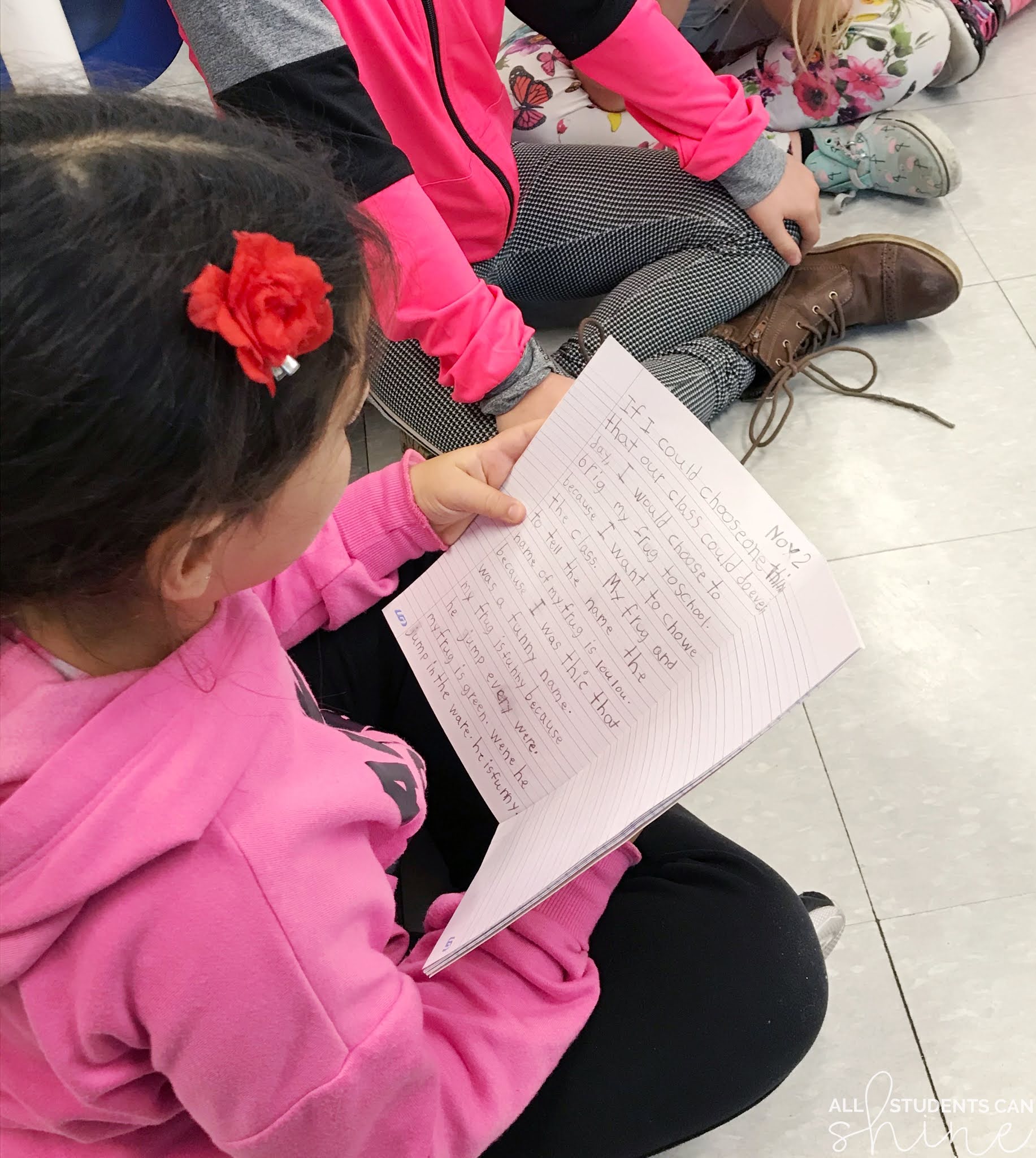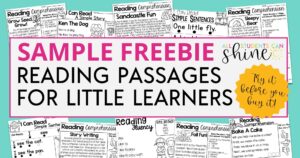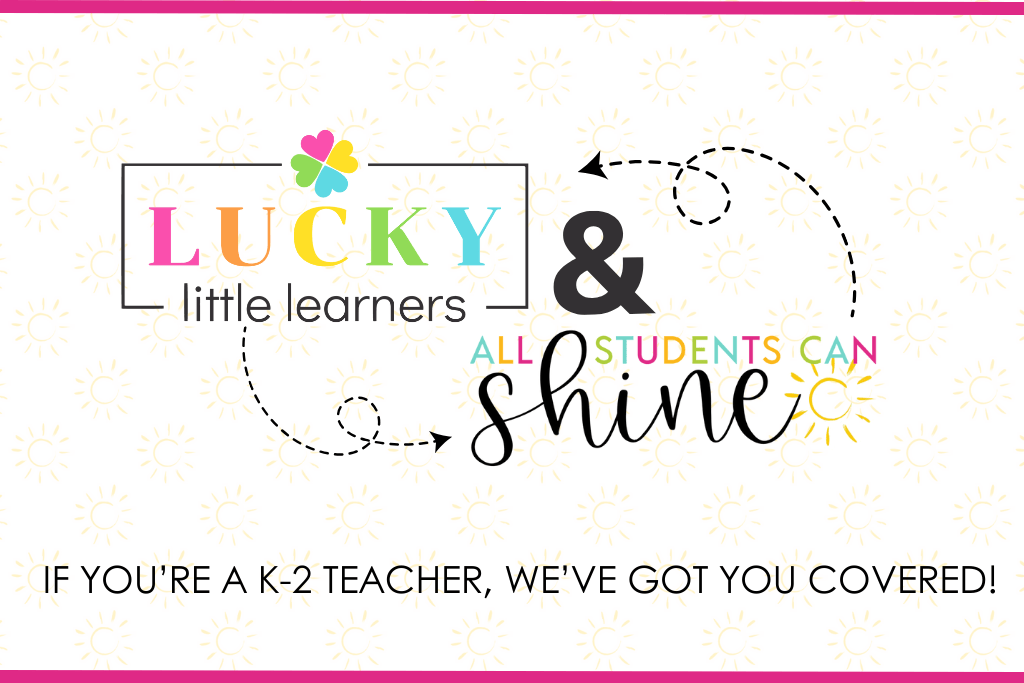It can seem like a daunting task getting little ones to stay engaged in the writing process and push themselves to grow and improve as writers. If you don’t have a system in place, you’ll quickly find yourself scrambling for ways to help your students become better writers. To help you avoid that frustration, I want to share the methods I use to teach writing in my classroom. You can use these ideas in your classroom to keep student writing sustainable throughout the school year so students stay engaged, their writing improves, and they can learn across the curriculum all year long.
Engage little writers by starting with a book
Get kids interested in your writing topic by grabbing their attention with a good story. There are a ton of great ways to do this. You can do a read-aloud related to a prompt. You can read to emphasize parts of a story like characters, plot, setting, etc… You can incorporate new genres of reading and writing that you are learning about. Consider reading informational books on a topic they will be writing about. Non-fiction texts can be fascinating and serve as a great tool for scaffolding your students’ learning.
An alternative idea if you are face-to-face in the classroom is to let kids immerse themselves in a concept. Give them book baskets at their tables or small groups on the carpet, and let them discover different kinds of books that illustrate a concept.
By giving concrete examples of great published writing, your students will start connecting and applying what they love about a good book to their own writing.
Help writers stretch their thinking by brainstorming ideas together
Use an anchor chart, whiteboard, Smartboard, or anything that all students have access to in the classroom. There’s a digital whiteboard option on most virtual platforms as well. You can brainstorm ideas, theme words, and vocabulary words that they might need so they have access to them and can refer to them when writing.
There are a lot of benefits to doing this group exercise as a class. Honoring ideas will not only stretch their thinking in new ways, but it’ll help grow student confidence and encourage participation. Hearing and seeing others thinking out loud will encourage your more shy students to make connections and eventually feel compelled to contribute also.
Brainstorming creates community, and thinking together as a group really helps boost everybody’s performance. Students have ownership of the resources you’ve created together and are much more likely to use them independently when it comes to working on their own writing.
Empower students by writing together as a class
Just like with your brainstorming, have chart paper, a white board, smart board etc. visible to the whole group. Model what great writing looks like using the genre, strategy, or concept you are teaching. For example: If you’re asking them to write a letter, write one together first. Have students give ideas one sentence at a time. While writing, correctly demonstrate things like grammar, spelling, punctuation, editing, revision, and so on. Eventually, students can practice their writing technique independently and demonstrate new ideas to the class as well.
You can use these digital writing templates to have kids practice writing on their own.
Get your students writing!
I usually have one big writing session per week. At that time, my resource teacher is in the room helping me support students. If kids need help spelling a word, I’ll either write it on the board, help them sound it out, or refer to our anchor charts to help them find a strategy. Of course, this all depends on the word they want to write and the writing level that the student is at.
Celebrate your little writers
Students deserve the chance to be recognized for the hard work and creative ideas they put into their writing. Taking a few minutes for students to read their own writing aloud and compliment each other’s strengths is a great culminating activity. You can do this daily at the end of writing time, at the end of each week to reflect on the concepts learned, and/or at the end of each writing unit to show how the students have grown as writers.
Success! Your SEASONAL WORD WALL will arrive in your inbox very soon!


















